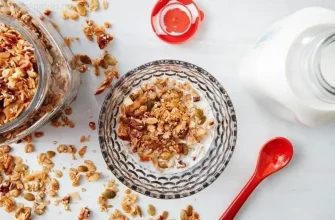Lasagna—a beloved dish that brings people together around the table, whether it’s a cozy family dinner or a gathering of friends. For those who follow a plant-based diet or simply wish to reduce their consumption of animal products, the idea of a vegan lasagna might seem like a daunting challenge. But fear not! Not only is vegan lasagna a fantastic alternative, but it can be just as rich, satisfying, and indulgent as its traditional counterpart.
As a passionate food enthusiast with decades of culinary experience and a firm belief in sharing knowledge freely, I’m here to walk you through everything you need to know to make a delicious and satisfying vegan lasagna. Let’s dive in from every angle—recipe breakdown, ingredients, potential pitfalls, and even alternative tips to make sure your lasagna is a hit every time.
The Core Ingredients of Vegan Lasagna
First, let’s take a look at the building blocks of a typical vegan lasagna. It’s not rocket science, but there are a few key elements that set it apart from the classic dairy and meat-filled version. Here are the essential ingredients you’ll need:
- Vegan Lasagna Noodles: This is typically the easiest part. Most regular lasagna noodles are already vegan, so you don’t need to worry about substituting. Just be sure to check the label, especially for added egg, which can sometimes sneak in.
- Vegan Cheese: There are numerous plant-based cheeses available now, including cashew cheese, soy-based cheese, or store-bought vegan mozzarella. You can opt for pre-shredded or make your own; I’ll get into that in a bit.
- Vegan Protein Sources: Here’s where you can get creative. Instead of ground beef or sausage, you can use plant-based options like lentils, crumbled tofu, tempeh, or even store-bought vegan meat crumbles. You can also make a simple vegetable lasagna with mushrooms, zucchini, and spinach if you’re looking for a lighter option.
- Tomato Sauce: The classic marinara or a rich tomato sauce is a must. Either use store-bought or make your own using tomatoes, garlic, onions, and fresh herbs like basil and oregano.
- Veggies: Fresh vegetables add not only nutrients but also texture and flavor. Spinach, mushrooms, zucchini, and bell peppers are some of the most popular choices, but feel free to mix it up depending on what’s in season.
- Vegan Bechamel Sauce: For a rich, creamy layer that rivals cheese, you can make a bechamel sauce from plant-based milk (like almond or oat milk), flour, and vegan butter. This will give your lasagna that creamy, decadent mouthfeel.
How to Build the Perfect Vegan Lasagna
Now that we’ve got the key ingredients covered, let’s talk about assembly. Here’s a simple step-by-step guide for putting everything together:
- Prepare the Veggies: Whether you’re using mushrooms, spinach, or other veggies, make sure to sauté them with a little olive oil, garlic, and seasoning until soft. If you’re using tofu or tempeh, crumble it up and cook it in the same way—add a little soy sauce or nutritional yeast for extra flavor.
- Make the Tomato Sauce: Heat up your marinara sauce or make a fresh batch by simmering canned tomatoes with garlic, onion, and herbs. You want a nice, thick sauce that will layer the noodles and vegetables effectively.
- Make the Bechamel Sauce: This is optional but adds an undeniable creaminess to your lasagna. Start by melting vegan butter, adding flour to make a roux, and then slowly whisk in your plant-based milk. Add a pinch of nutmeg, salt, and pepper to taste. Keep whisking until it thickens to a creamy consistency.
- Layer It Up: In a greased lasagna pan, start by spreading a layer of tomato sauce on the bottom. Follow it with a layer of noodles, then a layer of your vegetable or protein filling. Add some vegan cheese (or vegan ricotta, which you can make by blending tofu with lemon juice, garlic, and herbs), and finally, a dollop of your creamy bechamel. Repeat until all ingredients are used up, finishing with a generous topping of tomato sauce and vegan cheese.
- Bake: Cover the lasagna with foil and bake in a preheated oven at 375°F (190°C) for about 40 minutes. For the last 10 minutes, remove the foil to let the top get golden and bubbly.
- Rest Before Serving: Like any lasagna, vegan lasagna benefits from a little resting time to let the layers settle and the flavors meld together. Wait at least 10 minutes before slicing and serving.
Why Go Vegan? Health and Environmental Benefits
There are plenty of reasons why you might choose a vegan lasagna over the traditional version, beyond just taste. Let’s break them down:
1. Health Benefits
- Lower in Saturated Fats: Vegan lasagna eliminates the saturated fats found in dairy and meat, making it a heart-healthier option.
- Increased Fiber: The vegetables, beans, and whole grains used in a vegan lasagna contribute more fiber to your diet, which is great for digestion and overall health.
- No Cholesterol: Without dairy or meat, your vegan lasagna has no cholesterol, a key consideration for anyone watching their cardiovascular health.
2. Environmental Benefits
- Less Carbon Footprint: Producing plant-based foods generally requires fewer resources (water, land, energy) compared to raising animals for meat and dairy. If you’re looking to reduce your environmental impact, vegan lasagna is a step in the right direction.
- Animal Welfare: Going vegan helps reduce the demand for factory-farming practices that can harm animals. Choosing plant-based options is a way to support ethical food systems.
3. Weight Management
- Many people find that adopting a plant-based diet helps them maintain a healthy weight due to the lower calorie density of vegetables, grains, and legumes compared to animal products. Vegan lasagna, when made with whole-food ingredients, can be a satisfying and filling meal without excessive calories.
Common Pitfalls and How to Avoid Them
Making vegan lasagna sounds simple, but there are a few common mistakes that can result in a less-than-perfect dish. Let’s discuss these potential issues and how to avoid them:
- Runny Lasagna: If your lasagna is too watery, it might be because you haven’t cooked the vegetables enough before assembling. Mushrooms, in particular, release a lot of moisture, so be sure to sauté them until they’re browned and all the water has evaporated.
- Dry Noodles: Make sure your noodles are properly layered with sauce. If they aren’t sufficiently covered, they’ll dry out during baking. You can also add a little extra sauce or a layer of bechamel to keep everything moist.
- Too Bland: Vegan lasagna can sometimes lack the depth of flavor found in traditional meat and cheese versions. To avoid this, use plenty of herbs, spices, and seasoning, and don’t skimp on the garlic, onion, and nutritional yeast. Adding a bit of soy sauce or miso paste to your filling can also deepen the flavor.
- Overcooking: Like any lasagna, be careful not to overbake your creation. Keeping the foil on for most of the baking time ensures the lasagna stays moist. Remove the foil at the end to let the top get bubbly and golden.
A Few Alternative Twists
- Gluten-Free Lasagna: If you’re gluten-sensitive, you can find gluten-free lasagna noodles at most grocery stores, or you can make your own from gluten-free flour blends.
- Lasagna Roll-Ups: Instead of stacking the noodles, you can roll them up with your vegan fillings and bake them in a tomato sauce for an individual portion twist.
- Smoky Tempeh Bolognese: For a heartier vegan lasagna, swap in a smoky tempeh-based bolognese sauce. It’ll mimic the richness of a meat sauce but with plant-powered goodness.
Opinions From Around the World
- Maria (Spain, 42): “I was skeptical about how well a vegan lasagna could work, but after trying it for the first time, I’m hooked. I use almond milk for the bechamel and always include lots of mushrooms and spinach. My kids love it too!”
- James (USA, 56): “I’ve been vegetarian for years, but this was my first attempt at vegan lasagna. It turned out delicious, though I did miss the cheese. I used a cashew-based ricotta, and it was a game changer. My advice? Don’t skimp on the seasoning.”
- Amina (Nigeria, 30): “I’ve always been cautious with vegan recipes, but this lasagna was an absolute hit. I loved the combination of hearty lentils and tomato sauce. Definitely a keeper for family gatherings.”
- Tomo (Japan, 50): “I made a vegan version using tofu and miso for the filling, and it worked great. The flavors were deep and satisfying. My family loved it, though I think I might add a bit more soy sauce next time for an extra umami kick.”
- Olga (Russia, 65): “I’ve always made traditional lasagna, but after hearing so much about









